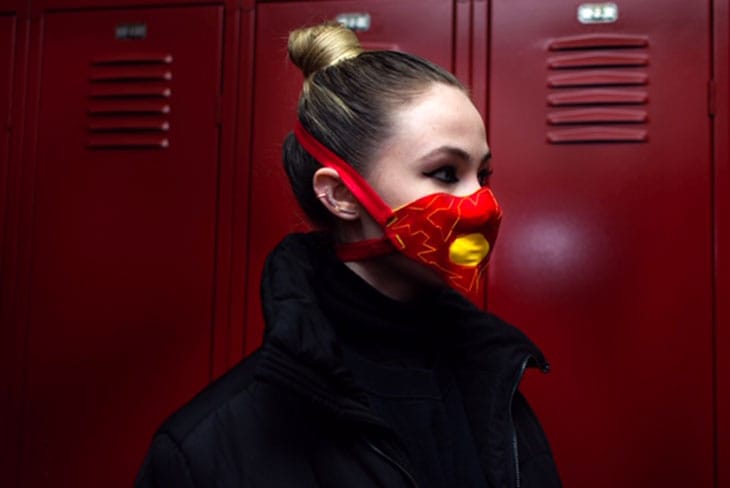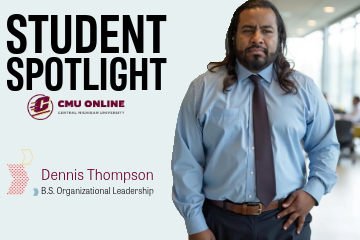Exploring masks as fashion
Faculty member Michael Mamp considers the pandemic’s impact on apparel
Experts on Point is a University Communications series focusing on CMU faculty who have special insights into interesting, important and timely topics. See the complete series here.

When Central Michigan University alum Michael Mamp returned to CMU seven years ago to join the Fashion Merchandising and Design faculty, he brought with him 14 years of fashion industry experience with companies such as Limited Brands, Saks Fifth Avenue and Bloomingdale's.
The Detroit native earned his bachelor's degree in fashion merchandising and design from CMU in 1996. He has a Master of Arts degree from the University of Nebraska, Lincoln, in textiles, clothing and design; and a doctoral degree from Iowa State University in apparel merchandising and design.
He teaches courses including FMD 280, Queer Fashion; which he developed and launched in 2018; and FMD 350, Professional Study Tour/NYC; in which his students visit New York City to meet alumni and other professionals working in the fashion world.
He also currently wears a fabric face mask created by CMU 2019 fashion alum Analiese Zaleski.
A career by design
Do you view your future with an eye for fashion? Learn more about CMU's fashion merchandising and design program.
We talked with Mamp about masks and face coverings as apparel in the time of COVID-19.
"Fashion has always been a reflection of the times." — Michael Mamp
Q: Are there times and places in which facial coverings have been considered fashion items?
A: People have found ways to incorporate some form of face covering into fashionable attire for centuries. This has been done at times for ceremonial purposes (think of veils at weddings or funerals), but veils in particular have been used as a fashionable accessory that also protected against the spread of communicable diseases. Historically, one example is the mantilla, a type of elaborate headdress attached to a veil that is often attributed to Spain. The mantilla was extremely popular in the 17th century and remains a staple of traditional dress both in Spain and Mexico.
Q: Do you think masks or face coverings could become fashionable in the U.S.?
A: Yes. In fact, some form of face covering has gone in and out of fashion over time. As the urban nomad trend entered the zeitgeist at the dawn of the 21st century, several designers such as Hussein Chalayan and Alexander McQueen incorporated forms of face covering or protective components that covered vulnerable parts of their bodies into their designs.

Q: How are political or social views driving people's decisions about mask wearing?
A: Unfortunately, in our current climate, mask wearing has been politicized. It's a shame, as the simple wearing of a mask in enclosed spaces is not only the smart thing to do as suggested by science but is just basic common courtesy to protect your health and the health of others.
Q: Overall, what factors drive innovation and new ideas in fashion?
A: Fashion has always been a reflection of the times. Politics, innovation, the economy and artistic trends all have an impact on fashion. Now we are seeing innovation in the design of masks; however, during the space race of the late 1960s we saw a form of futurism impact fashion, particularly in the work of André Courrèges and Pierre Cardin. Designers imagined what would be fashionable to wear on a space odyssey.
Q: Do you think the wearing of masks will influence students?
A: Yes, I think we will see fashion students at CMU incorporate face coverings into their work.




.jpeg?sfvrsn=2dd3cd2a_5)
